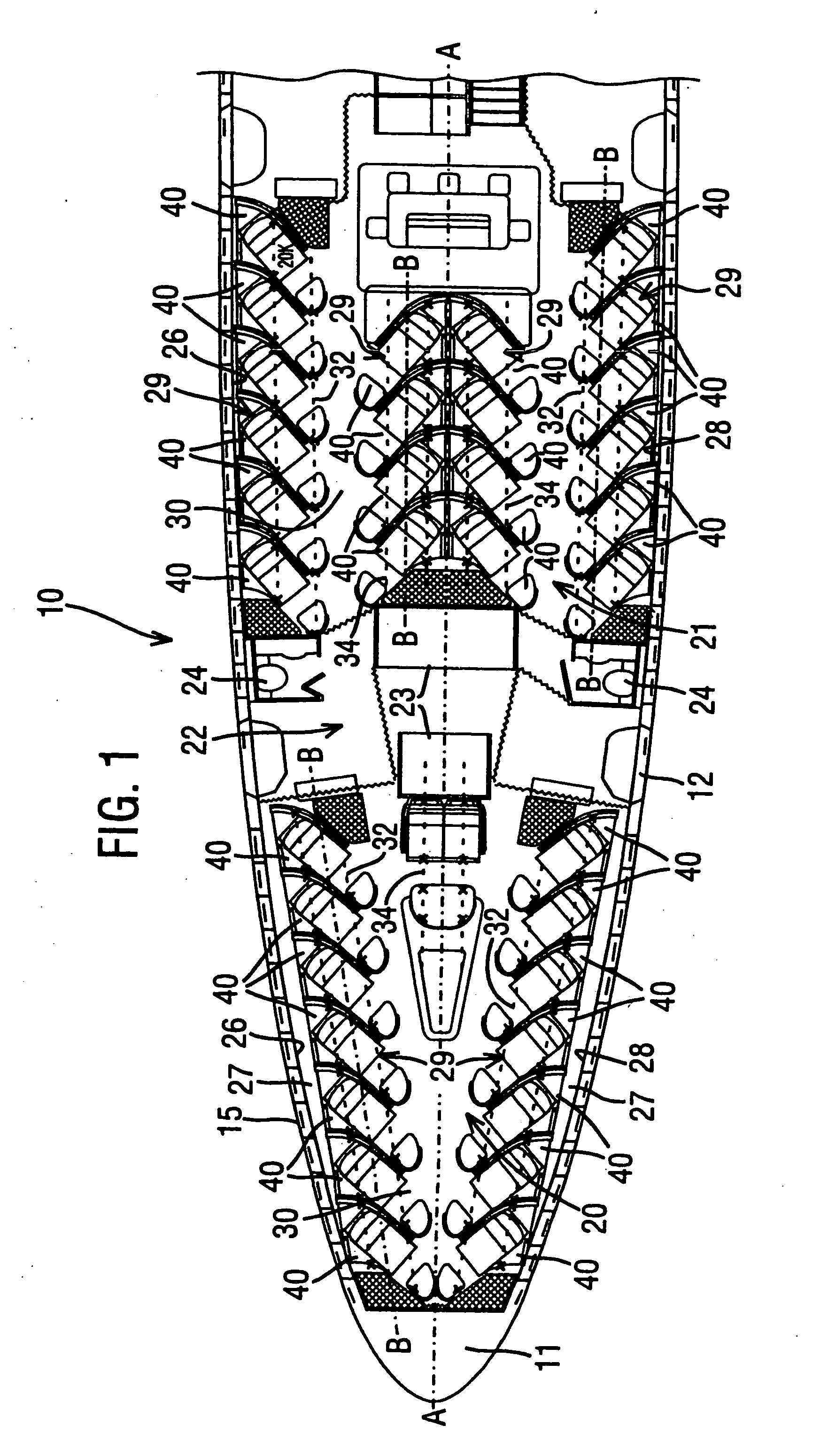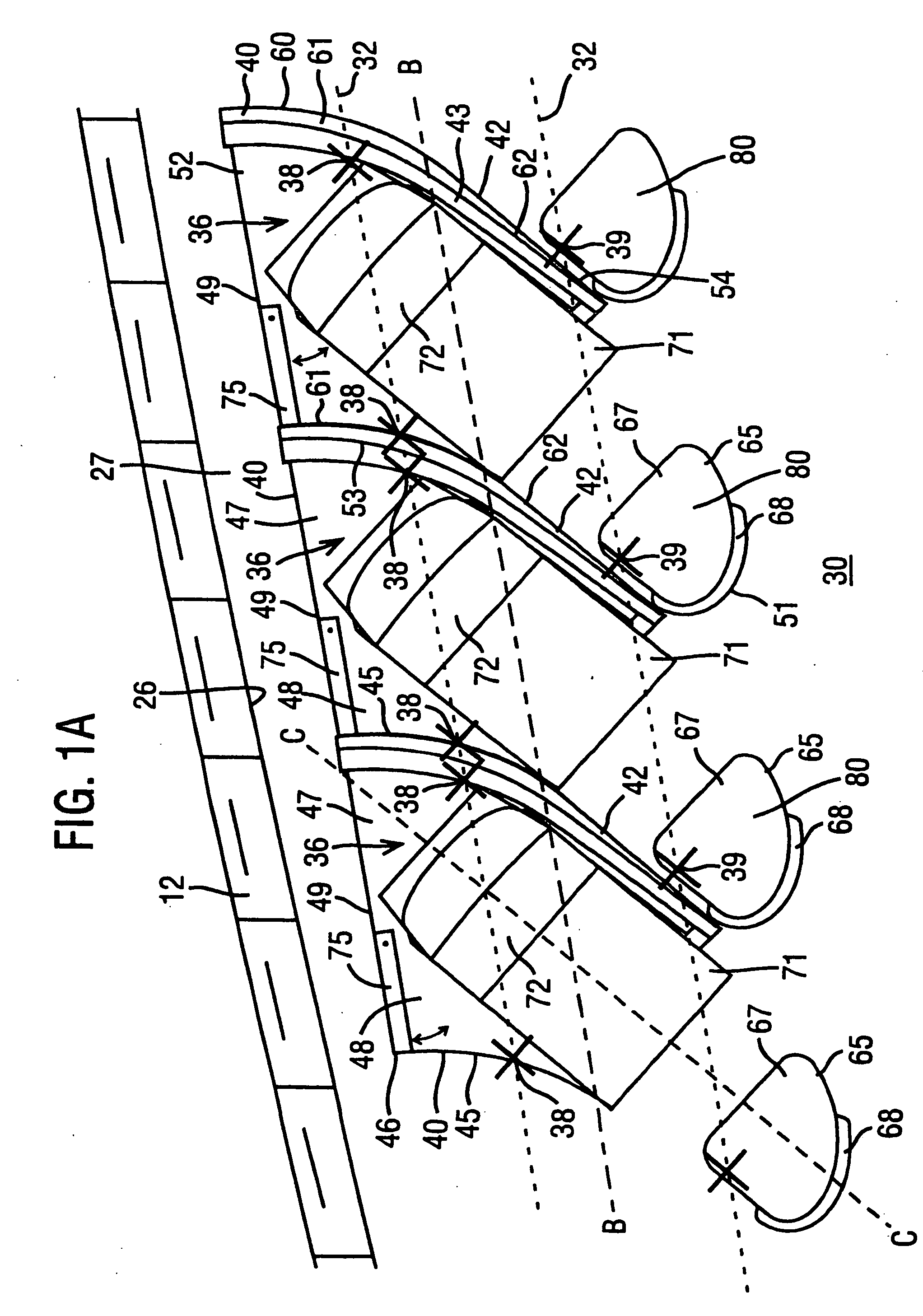Seating system and a passenger accommodation unit for a vehicle
a seating system and passenger technology, applied in the direction of aircraft floors, applications, air-treatment apparatus arrangements, etc., can solve the problems of increasing the pitch between adjacent rows of seats, not being able to meet the needs of passengers on longer flights, and many passengers' sleep problems
- Summary
- Abstract
- Description
- Claims
- Application Information
AI Technical Summary
Benefits of technology
Problems solved by technology
Method used
Image
Examples
Embodiment Construction
[0127] A passenger aircraft generally comprises a hollow, spindle-shaped fuselage having a front end and a rear end. A front end portion 12 of a typical aircraft fuselage 10, which is disposed towards the front end 11, is shown in FIG. 1 of the accompanying drawings, by way of example. Said fuselage 10 defines a longitudinal aircraft axis indicated by the chain-dot-line A-A in FIG. 1 between the front and rear ends, and the fuselage 10 tapers towards the front end 11 to form a nose portion 15.
[0128] The fuselage 10 accommodates many of the functions and facilities of the aircraft, including one or more passenger accommodation cabins 20, 21. The number and size of the passenger cabins 20, 21 provided on a given aircraft depends on the space available within the fuselage for passenger accommodation and on the desired configuration of the passenger accommodation. The present invention is not limited to the use of any particular shape, size or number of passenger cabins. However, in FI...
PUM
 Login to View More
Login to View More Abstract
Description
Claims
Application Information
 Login to View More
Login to View More - R&D
- Intellectual Property
- Life Sciences
- Materials
- Tech Scout
- Unparalleled Data Quality
- Higher Quality Content
- 60% Fewer Hallucinations
Browse by: Latest US Patents, China's latest patents, Technical Efficacy Thesaurus, Application Domain, Technology Topic, Popular Technical Reports.
© 2025 PatSnap. All rights reserved.Legal|Privacy policy|Modern Slavery Act Transparency Statement|Sitemap|About US| Contact US: help@patsnap.com



